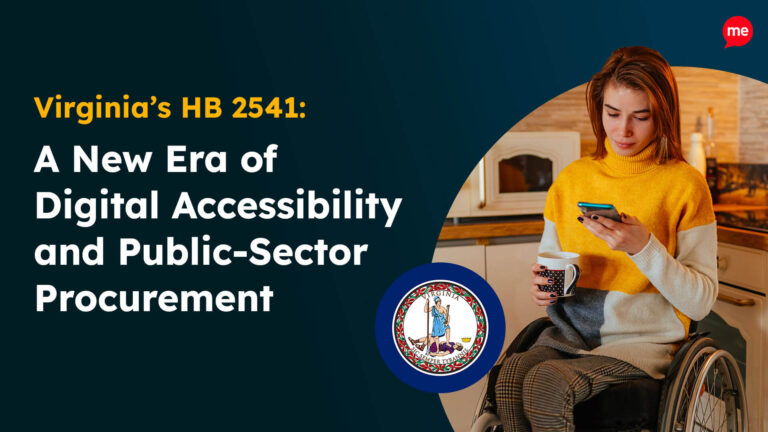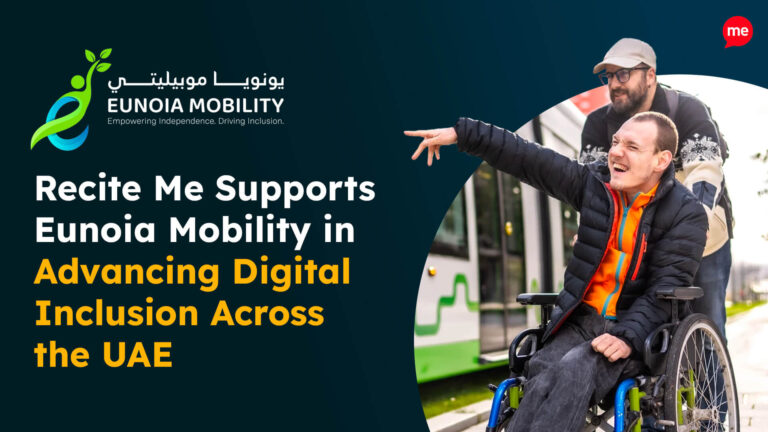America is home to an incredibly diverse range of languages. Without sufficient translation options on your website, you could be missing out on a huge portion of your potential target market.
Sure, English is considered the ‘lingua franca’ of the Internet – primarily because the Internet was developed in English-speaking countries, and it is the most commonly used language in international business, academia, and diplomacy. But plenty of potential customers – both at home and overseas – may need additional translation assistance.
Language Trends in America
The dominant language spoken across America is English, but millions of residents speak other languages too. Statistics reveal that:
- Around 45 million American residents (about 14% of the population) were born in another country (Congressional Budget Office).
- Over 68 million people (1 in every 5) speak a language other than English at home (US Census Bureau).
- Between 350 and 430 languages are spoken in the US, making it one of the most linguistically diverse countries in the world (Translators Without Borders).
It will come as little surprise that after English, the most frequently spoken language is Spanish. The population of America stands at over 334 million as of January 2023, and more than 41 million are native Spanish speakers.
The next most frequently spoken languages equate to a further 3% of the overall population:
- Chinese (including Cantonese and Mandarin) – over 3.4 million speakers.
- Tagalog (including Filipino) – over 1.72 million speakers.
- Vietnamese – over 1.5 million speakers.
- Arabic – over 1 million speakers.
- French – over 1 million speakers.
- Korean – over 1 million speakers.
- Russian – over 1 million speakers.
Source: World Atlas
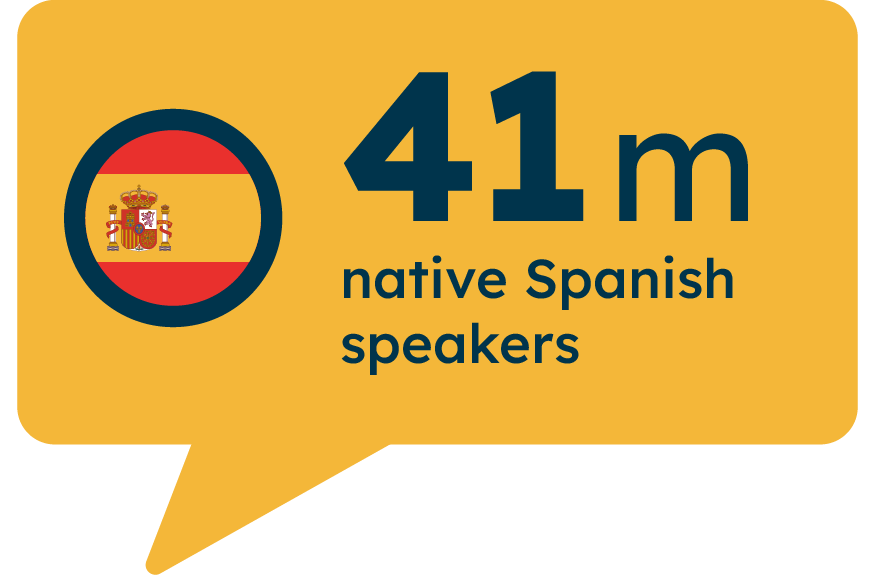
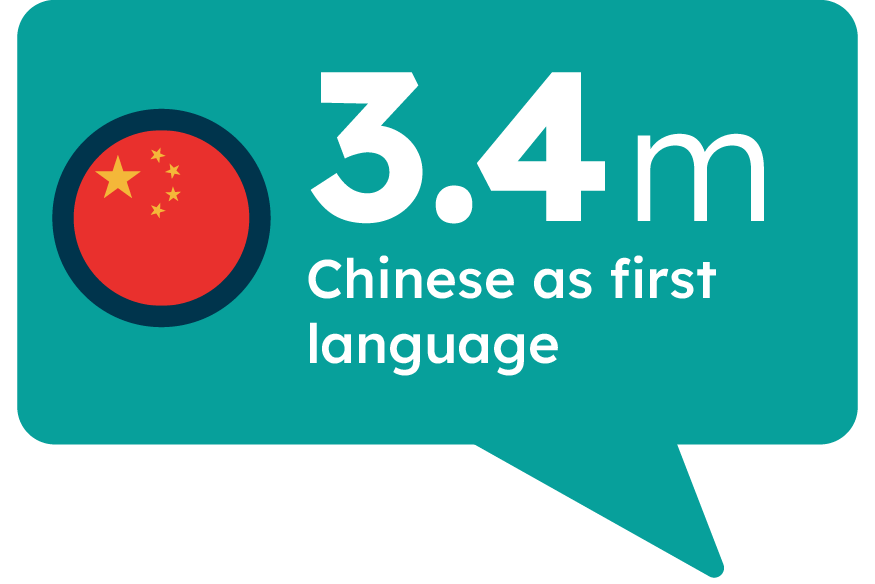
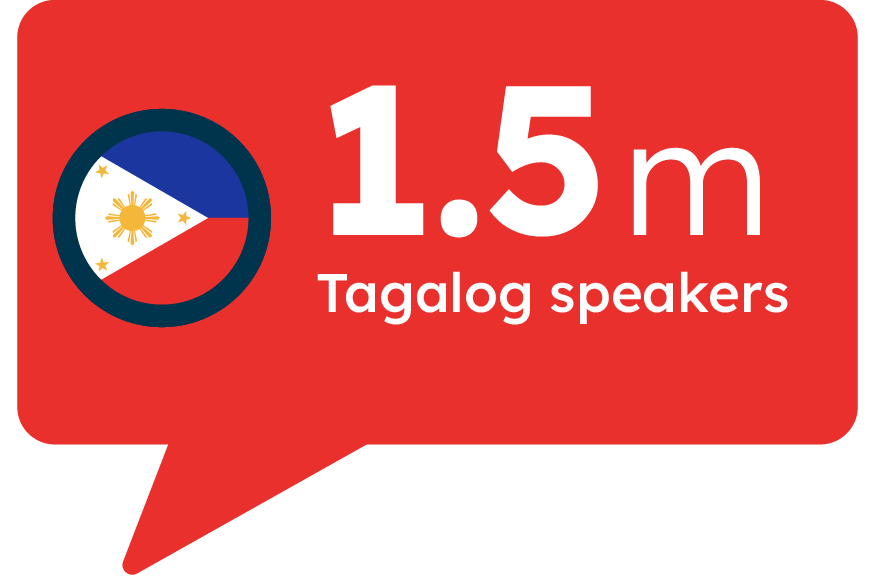
The Impacts of Language on Business Benefits
Having such a large percentage of the population speak a language other than English creates a problem for marketers. Businesses would be unwise to discount the spending power of millions of people. For example, a recent report estimated that the spending power of America’s Hispanic population alone is over $2.8 trillion annually.
But linguistic diversity doesn’t just affect the for-profit sector. Public sector bodies and not-for-profit organizations also need to accommodate varying linguistic needs. Otherwise, a significant portion of the population cannot access essential information about public services like education, healthcare, transport, etc.
The Impacts of Language on Local Business Websites
If you have a small or more regional online business, you may not think having options for multiple language preferences on your website is an important consideration. However, it’s not something you should dismiss just yet, as language usage in every state can vary significantly. For example, the seven most populous states in the country are also the biggest contributors to U.S. GDP, and all are home to a variety of linguistic traits:
- California – 12% of all Americans live in California, and 43.9% of residents speak English as a second language. The most frequently spoken languages after English and Spanish are Chinese and Tagalog.
- Texas – 9% of all Americans live in Texas, and 35.1% of residents speak English as a second language. The most frequently spoken languages after English and Spanish are Vietnamese and Chinese.
- Florida – 6.6% of all Americans live in Florida, and 29.4% of residents speak English as a second language. The most frequently spoken languages after English and Spanish are Haitian and Portuguese.
- New York – New York City is the biggest metropolitan area in the country, boasting the largest number of languages. 6% of all Americans live in New York State, and 30.3% of residents speak English as a second language. The most frequently spoken languages after English and Spanish are Chinese and Russian.
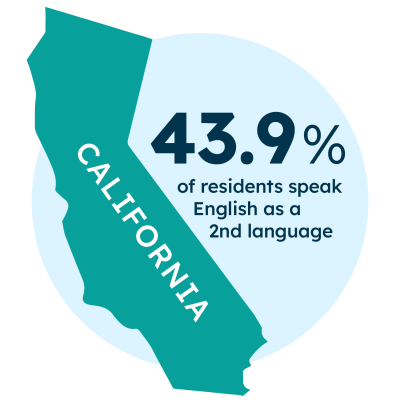
- Pennsylvania – 3.9% of all Americans live in Pennsylvania, and 11.5% of residents speak English as a second language. The most frequently spoken languages after English and Spanish are Chinese and Yiddish.
- Illinois – 3.8% of all Americans live in Illinois, and 23% of residents speak English as a second language. The most frequently spoken languages after English and Spanish are Polish and Chinese.
- Ohio – 3.5% of all Americans live in Ohio, and 7.2% of residents speak English as a second language. The most frequently spoken languages after English and Spanish are Yiddish and Chinese.
Source: USA Today
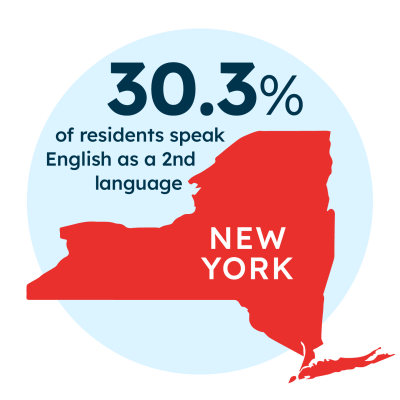
The Bottom-Line Benefits of a Multi-Lingual Website
Undoubtedly, there is a cost-benefit analysis to making sure websites can be accessed in multiple languages. And it’s impossible to cater to every language. However, with careful research and consideration, businesses can identify the best languages to optimize. The results speak for themselves, as research shows that:
- 65% of people prefer to read in their native language, even if it’s poor quality.
- 40% will not buy in other languages.
- 73% want product reviews in their native language if nothing else.
Source: CSA Research

“Businesses witness a 20% increase in conversions when they translate their landing pages and ads, and an astonishing 70% increase when they translate their entire website.”
Sri Sharma, Founder and CEO at Net Media Planet
Other Advantages of Embracing Linguistic Diversity
Of course, it’s not all about the bottom line. There are several additional benefits to offering multi-lingual support:
- Enhanced accessibility – Multilingual websites are more inclusive and accessible to individuals who are not proficient in English.
- Improved user experience – Providing content in native languages makes it easier for more people to understand and engage with your website.
- Expanded global reach – Content in multiple languages increases your global presence and potential customer base.
- Increased engagement – People are likely to spend more time on a website and interact with its content when content is presented in their preferred language.
- Boosted SEO – Multilingual content can improve search engine optimization by targeting keywords in various languages to increase organic traffic from different regions.
- Market leadership – Particularly in markets where competitors have not yet embraced linguistic diversity, translation features give your website a competitive edge.

“When your site is available in multiple languages, you attract the attention of an international market. You also become identified as a global brand, which elevates your status and improves your reputation. Consumers tend to trust global brands more than ones that are only known locally.”
Nick McGuire, E-commerce specialist and blogger
How Recite Me Can Help
Translating websites into multiple language formats without assistive technology is time-consuming and costly. Budget restraints often limit the number of languages you can choose. Plus, some languages, like Arabic and Hebrew, are complicated to code and involve significant changes to the layout and graphics so that each page can be read from right to left.
Enter The Recite Me Toolbar, an easy and cost-effective way to support customers who don’t speak English as a first language. Once installed, your website visitors can choose from a variety of linguistic tools:
- Text translation in over 100 languages
- Text-to-speech in 65 languages
- A built-in dictionary and thesaurus to check definitions
What the Data Says
Our most recent report demonstrates the real-world benefits of a linguistically diverse website. Statistics over the last 12 months show that:
- Over 41.3 million web pages have been viewed using the Recite Me toolbar.
- Nearly 68 million pieces of content were read aloud using the Recite Me screen reader.
- Over 39 million pieces of content were translated into different languages.
- The most popular languages to be translated were Spanish, French, and Italian.
What Our Clients Say
At Recite Me, we pride ourselves on our exceptional service, the power of our software, and the benefits it brings to our clients and the end-users of their websites.For more than 30 years, The Boys and Girls Clubs of Larimer County has served the youth in Larimer County. Through amazing programs, caring staff, and a safe atmosphere, they give youth a place to go when they need support, care, and most importantly, fun. They give youth a place to call home!
“We are so excited to work with Recite Me to improve access to our services for families in Larimer County, especially those who need us the most. Language translation was a need for us, and they were one of the only software options to offer this feature. Their customer service is top-notch, and they are incredibly easy to work with. Thank you, Recite Me, for helping make our website accessible to more people in our community!“
Jessica Schultz, Marketing Manager, Boys and Girls Clubs of Larimer County
Hidalgo County is the 7th largest county in the State of Texas, with a population that is 91.1% Hispanic.
“Meeting with the Recite Me team really opened our eyes to the variety of issues people struggle with when trying to get information online. For us, the language translation feature was a game changer. Seeing it work is like magic. We are very excited to make our website and resources available to more people in our community.”
Kristi Birkeland, President/CEO, United Way of Whatcom County
Does Your Website Speak Your Customer’s Language?
No? Then now is the time to make some changes, become a more inclusive business, and reap the rewards of reaching a broader market.
Get started on your website accessibility strategy today by working through the following action points:
- Contact our team to discuss your linguistic pain points and how we can help.
- Schedule a free demo or try our toolbar for yourself to see how it can benefit your customers.


